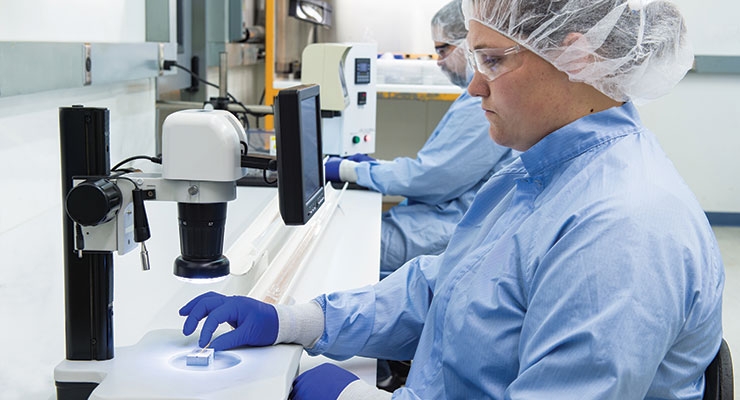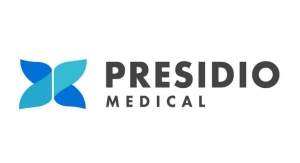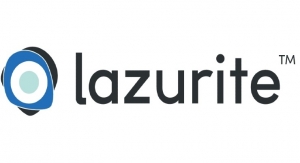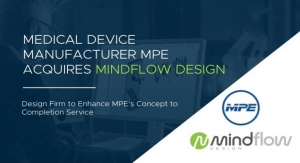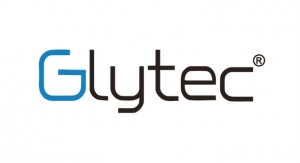Michael Barbella, Managing Editor09.09.15
“Whatever we accomplish is due to the combined effort.”
— Walt Disney Company
It was a classic case of first-day jitters.
The fluttering intensified as Michael D. Eisner approached the parking lot of his new office in Burbank, Calif., to begin his first full day as chief executive of the iconic and beloved Walt Disney Company. By the time he stepped into the building on that warm September morning in 1984, Eisner’s anxiety was approaching full throttle: Disney’s board was expecting great things from him—mainly, to restore some of the business “magic” lost under family stewardship. The public, contrarily, still idolized their “Uncle Walt” and was skeptical of Eisner’s potential.
“The coverage in the press was enormous, surprising me greatly ... I had forgotten just how fond of, and interested in, Disney as a company the public was. It made me nervous,” Eisner recalled in the 2010 book he co-authored with sports documentarian Aaron R. Cohen, titled, “Working Together: Why Great Partnerships Succeed.” “For years, I had avoided making deals out of ego and testosterone that would make the front page of The Wall Street Journal—only to appear a few years later on the business obituary page of The New York Times. As I drove to Burbank that day, I hoped that wouldn’t be the fate of this experiment.”
Eisner was still processing his professional misgivings as he settled into his new office—the same room where Disney himself had worked his creative magic. As he familiarized himself with his new surroundings, freshly minted President/Chief Operating Officer Frank Wells walked into Eisner’s office, greeted him warmly and sat down across from him. Wells and Eisner had crossed paths occasionally during their tenures for rival Hollywood studios but the pair had never worked together before.
Disney brass had wanted Wells and Eisner to be co-CEOs, but the former politely stepped aside when the latter insisted on sole ownership of the position. Eisner surprised himself by blurting out the demand during a top-level powwow several weeks prior and was equally as stunned by Wells’ quick consent. “I found myself wondering about Frank Wells,” Eisner confesses in his book. “What kind of person would spend his life so successfully climbing his way up the corporate ladder and then, at the very top, step aside for someone else—and someone else, for that matter, he didn’t know very well?”
The introverted kind, more likely than not. By assuming a co-leadership position at Disney—an iconic and beloved American brand—Wells was stepping into a very powerful (and at times, unforgiving) spotlight, an environment better suited for Eisner’s more colorful, dominant, extroverted personality. Indeed, Wells was more comfortable as the “cerebral leader” of Disney, preferring to handle the company’s mundane day-to-day operations and leaving the public relations showman role to his partner.
Eisner and Wells’ matchup not only proves that opposites attract, but also that contradicting personalities (introverts and extroverts) can be incredibly successful business cohorts. The two, along with executives like Walt Disney Studios Chairman Jeffrey Katzenberg, turned the complacent company around, restoring profit to the theme parks, creating a major retailing business and rejuvenating the movie-making division with such hits as “Beauty and the Beast,” “Pretty Woman,” “Sister Act” and “Aladdin.” They also helped Disney became a leader in home video sales.
The company’s stock market value soared from roughly $2 billion when the pair assumed their jobs to $22 billion by 1992, according to published reports.
During the decade they worked together, Wells was the yin to Eisner’s yang. When Eisner became overly excited about something, Wells would gently reel him back to Earth with practicality. If, for example, Eisner wanted to build a Mickey Mouse-shaped hotel, Wells would remind him of the costs involved.
Such professional harmony was evident from the duo’s very first day at the office. After exchanging pleasantries, Eisner discussed the day’s to-do list, then waited for Wells to respond and retreat to his own office.
But Wells never made a move to leave. After about 15 minutes, Eisner finally asked if the two were going to sit there together. “Well, yeah,” Wells said, I thought we would.”
Eisner politely explained to his new partner that he liked his privacy and offered to find another office. Wells quickly abdicated his seat and settled into the neighboring berth. Neither was alone for long though, as the two met nearly two dozen times that day to share news and compare notes from phone calls.
“My partnership with Frank Wells at Disney represented the most successful 10 years of my career,” Eisner wrote in a 2010 retrospective article for The Huffington Post. “We had a great time together, complementing each others’ styles and interests in a way that was, I dare say, magical. But if there’s anything to be learned from the story of our first day of work, it’s this: working together is never that simple. Even when two people are a perfect fit, there are going to be times when someone needs to speak up and say something difficult. Anyone who’s married knows this. Marriage is about surviving, counter-balancing, and building. On the whole, though, the institution of marriage—life collaborations—gets a lot more attention than the institution of business collaboration. But the benefits of working together—or finding a partner—are extraordinary.”
Quite extraordinary indeed: Business collaborations provide a slew of advantages to its participants, including reduced costs, improved quality, better revenue per employee, access to expertise, geographical penetration and reduced risk. Partnerships, in fact, have become an integral part of companies’ long-term growth strategies as they jockey for share in an increasingly globalized market.
Alliances have practically become the norm for medical device OEMs as they wrangle with hospital cutbacks, constant pricing pressures, shrinking reimbursement rates and a 2.3 percent excise tax on their products to help fund the Affordable Care Act (ACA). Flying solo no longer is an option; outside collaborations are essential for survival in the current healthcare climate.
“Medtech companies have been facing tremendous market pressures over the past few years—the global recession impacting customers’ budgets, ACA changing the market dynamics around cost and value, market shifts by growing emerging market economies, shifting business models and rapidly evolving technologies such as the Internet of Things,” noted Timothy Bowe, CEO of Foliage Inc., a Burlington, Mass.-based product development firm, and Altran North America, a Bordentown, N.J.-headquartered high-tech engineering and consulting company for the automotive, energy and life sciences industries.
“To address any one or two of these pressures would challenge most companies; to meet them all requires effective partnering with outsourcing companies that can support medtech organizations across the entire product life cycle,” Bowe continued. “These outsource partners have the ability to add innovation to next-generation products by leveraging technology from other industries, along with creative ideas around new ‘solutions’ and approaches aimed at reducing cost from the back end of the product life cycle to free up more investment for novel products and services.”
From Taboo to Touchstone
The medical device industry has never been a big proponent of change. When Boston Scientific Corp. founder Itzhak Bentov built the world’s first steerable catheter in 1967 (the company was called Medi-Tech back then), the medtech sector existed mainly in gar-ages and basements. Surgeons invented and refined devices for their own needs, and these instruments rarely made it to the general market. None of these inventions were regulated.
Most, if not all, surgeons were resistant to the emergence of new technology at that time, fearing the innovations could eliminate the need for their expertise. As surgeons dominated the medical hierarchy, device firms faced an uphill battle in selling standardized products to the healthcare market.
Bentov and other Boston Scientific (Medi-Tech) executives attempted to overcome physician resistance by recruiting well-qualified experts to act as sales agents, conducting extensive global product tours, attending industry conferences, tapping into increasing public interest in less invasive medical procedures, and exploiting several public relations coups for steerable catheter technology. The company also built relationships with influential and innovative surgeons, a move that perhaps was most effective at conquering industry-wide resistance to change.
Partnerships have been key in the evolution of outsourcing as well. In many ways, medtech’s path to strategic partnerships mirrors that of the pharmaceutical industry: Maturing companies begin consolidating, morphing into sales and marketing giants; they then develop outsourcing methodologies and relationships to penetrate global markets and bring more “blockbuster” or “disruptive” technologies to market. Finally, these outsourcing allies assume more control of areas of the product development process in which big manufacturers find themselves deficient. Partners who can perform the job quickly, cost-effectively and with more variability are most favored.
“Prior to 2000 the industry rarely outsourced unless it was absolutely something a company couldn’t do or make. Perhaps it was a geographical challenge or something beyond internal capabilities,” recalled Timothy Blair, managing director of Strategic Partnerships director of Latin America director for North American Science Associates Inc. (NAMSA), a medical research organization in Northwood, Ohio.
“Outsourcing was done for pure capability reasons. Today we are dealing with pressures of the Affordable Care Act, increased medical device taxes, squeezes on reimbursement, longer regulatory approval times, and larger amounts of required clinical data. Operationally, [medical device] companies are starting to view outsourcing differently,” he noted. “It’s no longer a matter of ‘we don’t have that equipment, or a particular expertise,’ now companies are considering outsourcing entire departments or refusing to upgrade laboratories because the costs to remain state-of-the-art and compliant are no longer a core competency. We know industry examples who have outsourced their entire R&D pipeline by restructuring their balance sheets and other companies who outsource 100 percent of their product development programs because they’ve recognized their core competency is to feed the sales and marketing machine. That’s pretty significant. We’re seeing a rapid transformation around what companies will outsource and what they won’t. The industry pressures are problematic and strategic outsourcing can alleviate some of these pains. We did not see this kind of outsourcing back in the ’90s, where a company would have given up that much control. But it’s a different time and beyond mega mergers, companies are exploring new ways to stay competitive.”
A time that demands radically different business strategies. A quarter century ago, few medtech firms would have readily collaborated on research and development with an outside partner. But industry executives finally are realizing that open innovation is a better vehicle—and in some cases, necessary—for new product advancements. Consequently, companies like Johnson & Johnson (JNJ) and Boston Scientific (among others) are seeking help from the outside world on novel new products. JNJ, for example, has formed more than 200 collaborations in the last two years through its four Innovation Centers to access top-notch science and technology in each region (Boston, Mass.; Menlo Park, Calif.; London, United Kingdom; and Shanghai, China) and meet the needs of both entrepreneurs and scientists developing medical device/diagnostic technologies, consumer healthcare products and pharmaceuticals.
Two of the alliances formed involve JNJ’s DePuy Synthes division; one deal is focused on advancing biomarkers to detect infection while the other is an academic institution partnership to evaluate next-generation orthopedic cements.
On the diagnostics front, Janssen Biotech has teamed up with organs-on-a-chip startup Emulate Inc., which launched last year with $12 million in Series A funding from Cedars-Sinai Medical Center and various other investors. The collaboration aims to deploy Emulate’s platform across specific Janssen Research & Development clinical research programs, including the use of Lung-on-a-Chip to evaluate pulmonary thrombosis and Liver-on-a-Chip to better predict liver toxicity.
JNJ also has reunited with MaRS Innovation, a Toronto, Canada-based medtech accelerator that previously produced a medical device that currently is in clinical testing to improve patient outcomes after catheter ablation.
Boston Scientific, meanwhile, is taking advantage of “big data” to develop effective treatments for heart failure and related cardiac conditions. The medical device behemoth partnered with Eden Prairie, Minn.-based Optum Inc. to examine unmet needs and challenges facing heart failure patients. The company was co-founded in 2013 by the Mayo Clinic to provide its teammates with healthcare data that can help improve patient outcomes. Pfizer and AARP (formerly the American Association of Retired Persons) are among Optum’s other partners.
Boston Scientific and Optum’s research will examine practice patterns, performance measures, comorbid condition management and various care processes. The partners particularly are focusing on ways new or existing products and services can help improve patient care.
“Medtech firms are always looking for the next market, which is getting tougher and tougher. Companies need the partnership and outsourcing ability to supplement their own competencies in order to bring products to market faster and in a more reliable pace—the first time right,” Bryan Szweda, senior director of global engineering at Irvine, Calif.-based Edwards Lifesciences, told Medical Product Outsourcing. “Companies 20 or 30 years ago really thought they had to develop products on their own because they wanted to control everything. But the industry has evolved past that point of trying to do everything okay. With the devices being developed nowadays and especially the tolerancing, the capabilities of the [product development] process need to be better. That’s where the outsourcing is really starting to come in. The Internet’s evolution over the last 20 years has given companies the ability to understand who the market leaders are in different processes and technologies. It’s really allowed organizations to do their diligence and find these partners.”
As a personnel database, the Internet is an excellent resource but industry experts warn that it shouldn’t be the only analytical tool used to evaluate potential partners. There are various factors that can make or break a outsourcing alliance, including competency, overall performance, speed-to-market, transparency, problem-solving skills and cultural alignment.
One of the most important determinants, however, is experience. Outsourcing partners with relevant experience in their cohort’s chosen market can help their clients satisfy regulatory standards, complete all required filings and select the proper materials for the project at hand. An experienced partner also will know how to grow the production process with increasing product volume.
Business collaborations follow some of the same basic rules as successful personal relationships: They need honesty, trust and open communication to thrive and last. Shared values and vision are paramount as well.
“It ultimately comes down to having a shared vision and a shared strategy of where the partnership and business arrangement is going to go. That allows decision-making to be aligned as far as what is best for both partners, not necessarily one side versus the other,” Szweda said. “ Trust and honesty enter into the equation right from the beginning. A shared vision, shared strategy and business process clarity help to build trust and a partnership mind-set—the idea that ‘we’re together. ‘It’s a ‘we,’ not an ‘I’ or a ‘they.’ Alignment occurs when both organizations are sitting together at the table, both organizations are talking about the same future direction, and both sides are willing to bring up the tough items and talk about them so there can be a harmonized and agreed upon method to move forward and help make the business successful.”

Many medical device outsourcing partners are broadening their focus and expending their capabilities to include full end-to-end service offerings. Somerset, Wis.-based SMC Ltd. offers services ranging from initial design to automation and full supply chain management. Image courtesy of SMC Ltd.
Outsourcing can take on various forms, depending on the partnering company’s specific needs. In the device sector, outsourcing services run the gamut from full service to targeted functions such as product design, development and production; engineering; packaging; and supply chain management (encompassing planning/forecasting, purchasing, product assembly, quality control, storage and distribution, experts note). It also includes more traditional areas of procurement; finance and accounting; human resources; real estate and facilities management; customer care; software development; and information technology. Virtually everything is game except for core intellectual property. A company such as Medtronic plc, for example, will not outsource the development of the algorithm its pacemaker uses to monitor heart rhythm, but rather will set up a separate infrastructure for a one-time project that needs specialized expertise, or will partner with a contract research organization or a company such as DuPont to develop the biocompatible coating of a device. Medtronic might also outsource the prototyping or reliability testing according to given specs or enter a joint development project.
Despite its numerous benefits, outsourcing partnerships are not without risk. In fact, industry mavens claim there are as many paths to failure as there are to success.
“As in any strategic outsourcing situation, there are key risks that need to be managed. The primary risk involves the product not being delivered as per requirements or design specifications,” explained Ajay Gannerkote, a partner at global management consulting firm McKinsey & Company. “This can be addressed and resolved by ensuring both parties spend enough time to understand the requirements and specifications, document these in detail and both parties agree. The quality of delivery is another risk, as not many vendors have quality standards that meet regulatory requirements; a careful vetting process by the medtech company is required to ensure the quality requirements are clearly defined and understood. The most common risk is missing cost and service level targets by the vendor. This happens when the company does not have a detailed understanding of supplier economics and supply chain capabilities prior to signing contracts. Vendors will sometimes sign contracts, but are unable to meet the cost or service level specifications due to a lack of capabilities. Another reason for this situation is the fluctuating demand and frequent changes from the outsourcing company.”
Such product development oscillations, though, easily can be mitigated by open and early communication with the outsourcing partner.
“The level of risk is established right at the start in choosing the CM [contract manufacturer]. The greater the disconnect in understanding, communication, and technical match, the greater the risk to the project,” said Barbara Tischart, vice president of marketing for SMC Ltd., a Somerset, Wis.-based healthcare device contract manufacturer. “Working with a CM early in the process can result in increased design for manufacturability, cost management, and better supply chain management resulting in speed-to-market and in achieving budgets. Open communications and expectations are key to the success of a program, even when we know things will change. Contract manufacturers experienced in product development understand that there is a high likelihood of iterations and changes, and they are able to provide options and creative solutions as part of the team, and then utilize internal resources dedicated to the development process to execute those solutions.”
Not exactly Fantasyland, but magical nonetheless.
— Walt Disney Company
It was a classic case of first-day jitters.
The fluttering intensified as Michael D. Eisner approached the parking lot of his new office in Burbank, Calif., to begin his first full day as chief executive of the iconic and beloved Walt Disney Company. By the time he stepped into the building on that warm September morning in 1984, Eisner’s anxiety was approaching full throttle: Disney’s board was expecting great things from him—mainly, to restore some of the business “magic” lost under family stewardship. The public, contrarily, still idolized their “Uncle Walt” and was skeptical of Eisner’s potential.
“The coverage in the press was enormous, surprising me greatly ... I had forgotten just how fond of, and interested in, Disney as a company the public was. It made me nervous,” Eisner recalled in the 2010 book he co-authored with sports documentarian Aaron R. Cohen, titled, “Working Together: Why Great Partnerships Succeed.” “For years, I had avoided making deals out of ego and testosterone that would make the front page of The Wall Street Journal—only to appear a few years later on the business obituary page of The New York Times. As I drove to Burbank that day, I hoped that wouldn’t be the fate of this experiment.”
Eisner was still processing his professional misgivings as he settled into his new office—the same room where Disney himself had worked his creative magic. As he familiarized himself with his new surroundings, freshly minted President/Chief Operating Officer Frank Wells walked into Eisner’s office, greeted him warmly and sat down across from him. Wells and Eisner had crossed paths occasionally during their tenures for rival Hollywood studios but the pair had never worked together before.
Disney brass had wanted Wells and Eisner to be co-CEOs, but the former politely stepped aside when the latter insisted on sole ownership of the position. Eisner surprised himself by blurting out the demand during a top-level powwow several weeks prior and was equally as stunned by Wells’ quick consent. “I found myself wondering about Frank Wells,” Eisner confesses in his book. “What kind of person would spend his life so successfully climbing his way up the corporate ladder and then, at the very top, step aside for someone else—and someone else, for that matter, he didn’t know very well?”
The introverted kind, more likely than not. By assuming a co-leadership position at Disney—an iconic and beloved American brand—Wells was stepping into a very powerful (and at times, unforgiving) spotlight, an environment better suited for Eisner’s more colorful, dominant, extroverted personality. Indeed, Wells was more comfortable as the “cerebral leader” of Disney, preferring to handle the company’s mundane day-to-day operations and leaving the public relations showman role to his partner.
Eisner and Wells’ matchup not only proves that opposites attract, but also that contradicting personalities (introverts and extroverts) can be incredibly successful business cohorts. The two, along with executives like Walt Disney Studios Chairman Jeffrey Katzenberg, turned the complacent company around, restoring profit to the theme parks, creating a major retailing business and rejuvenating the movie-making division with such hits as “Beauty and the Beast,” “Pretty Woman,” “Sister Act” and “Aladdin.” They also helped Disney became a leader in home video sales.
The company’s stock market value soared from roughly $2 billion when the pair assumed their jobs to $22 billion by 1992, according to published reports.
During the decade they worked together, Wells was the yin to Eisner’s yang. When Eisner became overly excited about something, Wells would gently reel him back to Earth with practicality. If, for example, Eisner wanted to build a Mickey Mouse-shaped hotel, Wells would remind him of the costs involved.
Such professional harmony was evident from the duo’s very first day at the office. After exchanging pleasantries, Eisner discussed the day’s to-do list, then waited for Wells to respond and retreat to his own office.
But Wells never made a move to leave. After about 15 minutes, Eisner finally asked if the two were going to sit there together. “Well, yeah,” Wells said, I thought we would.”
Eisner politely explained to his new partner that he liked his privacy and offered to find another office. Wells quickly abdicated his seat and settled into the neighboring berth. Neither was alone for long though, as the two met nearly two dozen times that day to share news and compare notes from phone calls.
“My partnership with Frank Wells at Disney represented the most successful 10 years of my career,” Eisner wrote in a 2010 retrospective article for The Huffington Post. “We had a great time together, complementing each others’ styles and interests in a way that was, I dare say, magical. But if there’s anything to be learned from the story of our first day of work, it’s this: working together is never that simple. Even when two people are a perfect fit, there are going to be times when someone needs to speak up and say something difficult. Anyone who’s married knows this. Marriage is about surviving, counter-balancing, and building. On the whole, though, the institution of marriage—life collaborations—gets a lot more attention than the institution of business collaboration. But the benefits of working together—or finding a partner—are extraordinary.”
Quite extraordinary indeed: Business collaborations provide a slew of advantages to its participants, including reduced costs, improved quality, better revenue per employee, access to expertise, geographical penetration and reduced risk. Partnerships, in fact, have become an integral part of companies’ long-term growth strategies as they jockey for share in an increasingly globalized market.
Alliances have practically become the norm for medical device OEMs as they wrangle with hospital cutbacks, constant pricing pressures, shrinking reimbursement rates and a 2.3 percent excise tax on their products to help fund the Affordable Care Act (ACA). Flying solo no longer is an option; outside collaborations are essential for survival in the current healthcare climate.
“Medtech companies have been facing tremendous market pressures over the past few years—the global recession impacting customers’ budgets, ACA changing the market dynamics around cost and value, market shifts by growing emerging market economies, shifting business models and rapidly evolving technologies such as the Internet of Things,” noted Timothy Bowe, CEO of Foliage Inc., a Burlington, Mass.-based product development firm, and Altran North America, a Bordentown, N.J.-headquartered high-tech engineering and consulting company for the automotive, energy and life sciences industries.
“To address any one or two of these pressures would challenge most companies; to meet them all requires effective partnering with outsourcing companies that can support medtech organizations across the entire product life cycle,” Bowe continued. “These outsource partners have the ability to add innovation to next-generation products by leveraging technology from other industries, along with creative ideas around new ‘solutions’ and approaches aimed at reducing cost from the back end of the product life cycle to free up more investment for novel products and services.”
From Taboo to Touchstone
The medical device industry has never been a big proponent of change. When Boston Scientific Corp. founder Itzhak Bentov built the world’s first steerable catheter in 1967 (the company was called Medi-Tech back then), the medtech sector existed mainly in gar-ages and basements. Surgeons invented and refined devices for their own needs, and these instruments rarely made it to the general market. None of these inventions were regulated.
Most, if not all, surgeons were resistant to the emergence of new technology at that time, fearing the innovations could eliminate the need for their expertise. As surgeons dominated the medical hierarchy, device firms faced an uphill battle in selling standardized products to the healthcare market.
Bentov and other Boston Scientific (Medi-Tech) executives attempted to overcome physician resistance by recruiting well-qualified experts to act as sales agents, conducting extensive global product tours, attending industry conferences, tapping into increasing public interest in less invasive medical procedures, and exploiting several public relations coups for steerable catheter technology. The company also built relationships with influential and innovative surgeons, a move that perhaps was most effective at conquering industry-wide resistance to change.
Partnerships have been key in the evolution of outsourcing as well. In many ways, medtech’s path to strategic partnerships mirrors that of the pharmaceutical industry: Maturing companies begin consolidating, morphing into sales and marketing giants; they then develop outsourcing methodologies and relationships to penetrate global markets and bring more “blockbuster” or “disruptive” technologies to market. Finally, these outsourcing allies assume more control of areas of the product development process in which big manufacturers find themselves deficient. Partners who can perform the job quickly, cost-effectively and with more variability are most favored.
“Prior to 2000 the industry rarely outsourced unless it was absolutely something a company couldn’t do or make. Perhaps it was a geographical challenge or something beyond internal capabilities,” recalled Timothy Blair, managing director of Strategic Partnerships director of Latin America director for North American Science Associates Inc. (NAMSA), a medical research organization in Northwood, Ohio.
“Outsourcing was done for pure capability reasons. Today we are dealing with pressures of the Affordable Care Act, increased medical device taxes, squeezes on reimbursement, longer regulatory approval times, and larger amounts of required clinical data. Operationally, [medical device] companies are starting to view outsourcing differently,” he noted. “It’s no longer a matter of ‘we don’t have that equipment, or a particular expertise,’ now companies are considering outsourcing entire departments or refusing to upgrade laboratories because the costs to remain state-of-the-art and compliant are no longer a core competency. We know industry examples who have outsourced their entire R&D pipeline by restructuring their balance sheets and other companies who outsource 100 percent of their product development programs because they’ve recognized their core competency is to feed the sales and marketing machine. That’s pretty significant. We’re seeing a rapid transformation around what companies will outsource and what they won’t. The industry pressures are problematic and strategic outsourcing can alleviate some of these pains. We did not see this kind of outsourcing back in the ’90s, where a company would have given up that much control. But it’s a different time and beyond mega mergers, companies are exploring new ways to stay competitive.”
A time that demands radically different business strategies. A quarter century ago, few medtech firms would have readily collaborated on research and development with an outside partner. But industry executives finally are realizing that open innovation is a better vehicle—and in some cases, necessary—for new product advancements. Consequently, companies like Johnson & Johnson (JNJ) and Boston Scientific (among others) are seeking help from the outside world on novel new products. JNJ, for example, has formed more than 200 collaborations in the last two years through its four Innovation Centers to access top-notch science and technology in each region (Boston, Mass.; Menlo Park, Calif.; London, United Kingdom; and Shanghai, China) and meet the needs of both entrepreneurs and scientists developing medical device/diagnostic technologies, consumer healthcare products and pharmaceuticals.
Two of the alliances formed involve JNJ’s DePuy Synthes division; one deal is focused on advancing biomarkers to detect infection while the other is an academic institution partnership to evaluate next-generation orthopedic cements.
On the diagnostics front, Janssen Biotech has teamed up with organs-on-a-chip startup Emulate Inc., which launched last year with $12 million in Series A funding from Cedars-Sinai Medical Center and various other investors. The collaboration aims to deploy Emulate’s platform across specific Janssen Research & Development clinical research programs, including the use of Lung-on-a-Chip to evaluate pulmonary thrombosis and Liver-on-a-Chip to better predict liver toxicity.
JNJ also has reunited with MaRS Innovation, a Toronto, Canada-based medtech accelerator that previously produced a medical device that currently is in clinical testing to improve patient outcomes after catheter ablation.
Boston Scientific, meanwhile, is taking advantage of “big data” to develop effective treatments for heart failure and related cardiac conditions. The medical device behemoth partnered with Eden Prairie, Minn.-based Optum Inc. to examine unmet needs and challenges facing heart failure patients. The company was co-founded in 2013 by the Mayo Clinic to provide its teammates with healthcare data that can help improve patient outcomes. Pfizer and AARP (formerly the American Association of Retired Persons) are among Optum’s other partners.
Boston Scientific and Optum’s research will examine practice patterns, performance measures, comorbid condition management and various care processes. The partners particularly are focusing on ways new or existing products and services can help improve patient care.
“Medtech firms are always looking for the next market, which is getting tougher and tougher. Companies need the partnership and outsourcing ability to supplement their own competencies in order to bring products to market faster and in a more reliable pace—the first time right,” Bryan Szweda, senior director of global engineering at Irvine, Calif.-based Edwards Lifesciences, told Medical Product Outsourcing. “Companies 20 or 30 years ago really thought they had to develop products on their own because they wanted to control everything. But the industry has evolved past that point of trying to do everything okay. With the devices being developed nowadays and especially the tolerancing, the capabilities of the [product development] process need to be better. That’s where the outsourcing is really starting to come in. The Internet’s evolution over the last 20 years has given companies the ability to understand who the market leaders are in different processes and technologies. It’s really allowed organizations to do their diligence and find these partners.”
As a personnel database, the Internet is an excellent resource but industry experts warn that it shouldn’t be the only analytical tool used to evaluate potential partners. There are various factors that can make or break a outsourcing alliance, including competency, overall performance, speed-to-market, transparency, problem-solving skills and cultural alignment.
One of the most important determinants, however, is experience. Outsourcing partners with relevant experience in their cohort’s chosen market can help their clients satisfy regulatory standards, complete all required filings and select the proper materials for the project at hand. An experienced partner also will know how to grow the production process with increasing product volume.
Business collaborations follow some of the same basic rules as successful personal relationships: They need honesty, trust and open communication to thrive and last. Shared values and vision are paramount as well.
“It ultimately comes down to having a shared vision and a shared strategy of where the partnership and business arrangement is going to go. That allows decision-making to be aligned as far as what is best for both partners, not necessarily one side versus the other,” Szweda said. “ Trust and honesty enter into the equation right from the beginning. A shared vision, shared strategy and business process clarity help to build trust and a partnership mind-set—the idea that ‘we’re together. ‘It’s a ‘we,’ not an ‘I’ or a ‘they.’ Alignment occurs when both organizations are sitting together at the table, both organizations are talking about the same future direction, and both sides are willing to bring up the tough items and talk about them so there can be a harmonized and agreed upon method to move forward and help make the business successful.”
Many medical device outsourcing partners are broadening their focus and expending their capabilities to include full end-to-end service offerings. Somerset, Wis.-based SMC Ltd. offers services ranging from initial design to automation and full supply chain management. Image courtesy of SMC Ltd.
Despite its numerous benefits, outsourcing partnerships are not without risk. In fact, industry mavens claim there are as many paths to failure as there are to success.
“As in any strategic outsourcing situation, there are key risks that need to be managed. The primary risk involves the product not being delivered as per requirements or design specifications,” explained Ajay Gannerkote, a partner at global management consulting firm McKinsey & Company. “This can be addressed and resolved by ensuring both parties spend enough time to understand the requirements and specifications, document these in detail and both parties agree. The quality of delivery is another risk, as not many vendors have quality standards that meet regulatory requirements; a careful vetting process by the medtech company is required to ensure the quality requirements are clearly defined and understood. The most common risk is missing cost and service level targets by the vendor. This happens when the company does not have a detailed understanding of supplier economics and supply chain capabilities prior to signing contracts. Vendors will sometimes sign contracts, but are unable to meet the cost or service level specifications due to a lack of capabilities. Another reason for this situation is the fluctuating demand and frequent changes from the outsourcing company.”
Such product development oscillations, though, easily can be mitigated by open and early communication with the outsourcing partner.
“The level of risk is established right at the start in choosing the CM [contract manufacturer]. The greater the disconnect in understanding, communication, and technical match, the greater the risk to the project,” said Barbara Tischart, vice president of marketing for SMC Ltd., a Somerset, Wis.-based healthcare device contract manufacturer. “Working with a CM early in the process can result in increased design for manufacturability, cost management, and better supply chain management resulting in speed-to-market and in achieving budgets. Open communications and expectations are key to the success of a program, even when we know things will change. Contract manufacturers experienced in product development understand that there is a high likelihood of iterations and changes, and they are able to provide options and creative solutions as part of the team, and then utilize internal resources dedicated to the development process to execute those solutions.”
Not exactly Fantasyland, but magical nonetheless.

